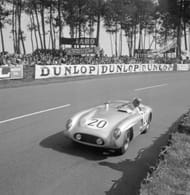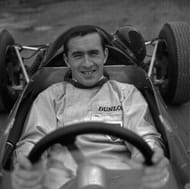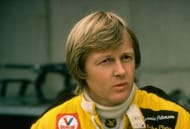Formula One is a top ranked spectator sport in the world with over 400 million viewers watching annually worldwide. For the love of racing and every emotion that goes with it, the prospect of risk cannot be discounted to even the slightest of margins. After all, motorsport in general walks the fine line between life and death from time and time again as the late great Ayrton Senna summed up once, “By being a racing driver you are under risk all the time”.
To the partisan spectators of this generation, safety in our sport apparently came at a cost spurred by the relentless pursuit of some people to up the standards through the Grand Prix racing’s earliest years while others died doing what they truly believed in laying foundation to where racing is today.
It is easy to overlook and rant about how safety standards can be improved but the rugged and pain-staking road back then towards a better future needs to be looked upon with gratitude.
Early days
The Formula One World Championship began in 1950 and in the best part of the first decade safety was almost non-existent as severe accidents and fatalities were considered as part of the show.
Consequently, Grand Prix drivers wore cotton T-shirts and trousers to suit their comfort inside the cockpit and helmets for protecting perhaps only their hairstyles. While the regulations governing the cars were not restricted and weight limited, spectators could see them on-the-edge every time standing so close to the roads as most circuits were not really built to serve the purpose of just racing but normal commuting without the pesky interruption of barriers.
The sheer gallantry of these men is nothing short of awe-inspiring as they pushed the cars to its very limits while putting their head out to be on eye-contact with the racing line and almost driving the wheels off it sliding through the corners while having the perfection and balance in check.
The 1955 Le Mans disaster goes into the history books as the darkest day in motor racing as 82 spectators, along with Mercedes factory driver Pierre Levegh who ricocheted into the pit-lane grandstand, perished at the scene. While 120 others were injured, this reminded everyone how dangerous the sport can be.
In the wake of that horrendous incident and cars getting faster with the ingenuity of Cooper by placing engines in the middle, races were cut-short into two hours or 300km distance and additionally alcohol-based racing fuel was disallowed in place of commercialised petrol but fatalities during testing and race days still persisted.
1960s:
The intense rate of developments in the 1960s was crucial to the extremely fast and technologically advanced racing cars in the decades that followed. As ever, the hunger to turn round a car faster than the previous lap surmounted, some clever minds on the paddock stepped foot into the unknowns.
Colin Chapman’s revolutionary breakthrough development of the aluminium monocoque chassis design significantly upped speeds. It also had its downside, however, as one in eight crashes resulted in fatal and serious injuries to drivers due to the use of lighter materials like magnesium that quickly turn the cars into huge fireball upon crashing.
Some of the big names like Lorenzo Bandini, Jo Schlesser and Piers Courage lost their lives in the era.
Revised roll bars 5cm above the driver’s helmet and double-brake circuits became mandatory alongside fireproof suits, seat harnesses and double fire extinguishing systems. Interrupters for electronic systems, automatic starter, safety bladder fuel tanks, reverse gear and oil catch tanks were also introduced.
1970s:
The 1970s set the cornerstone for track safety with the Scottish legend Sir Jackie Stewart and BRM boss Louis Stanley led a campaign demanding improvements in safety standards and on-track medical facilities by boycotting the 1969 Belgian GP,which was run at the treacherous 14.9km (9.31m) long Spa-Francorchamps circuit. F1 wouldn’t return there between 1971 and 1982 before the ludicrously-fast course was extensively modified.
In 1976, despite Niki Lauda’s concerns of the weather on the 22.8km (14.2m), 160-turn, grueling Nurburgring-Nordschleife track the race still went on. On the second lap he crashed heavily, and was trapped in the 800 plus degree burning wreckage before being pulled out of the fire in unconscious condition.
He returned to the track after six weeks in heroic fashion at Monza following the near-fatal crash, exhibiting the mental toughness of drivers in those days.
In the aftermath of that incident, long-tracks like the Clermont Ferrand in France, Spa and the Nürburgring were phased out of the calendar before the latter two would return with modified track layouts and improved safety features.
Beside all the measures taken to contest the races in a safer environment, cars were reaching new heights in performance with ground effect aerodynamics. Deaths would follow at an average of one every year with names like Jochen Rindt, Jo Siffert, Patrick Depailler, Francois Cevert and Ronnie Peterson losing their lives.
1980s:
The 1978 Italian GP witnessed the death of arguably the finest Swedish driver ever to have graced Formula One. Ronnie Peterson finished runner-up in only his second season at the top flight driving a March 711 and stunned the whole paddock. Having taken his JPS Lotus to the constructors’ crown by finishing third behind team-mate Emerson Fittipaldi in 1973, his best chance of mounting a title fight came five seasons later with the British team.
With the season approaching its closing stage, the ‘Super Swede’ and eventual champion Mario Andretti had twelve points separating each other. Not an ideal start to Peterson’s weekend as he damaged his Lotus 79 in practice at Monza beyond immediate repair and reverted to previous year’s Lotus 78 challenger.
The race starter turned the lights green before the entire field was ready and as a result Peterson who already had a poor getaway was bunched up by those from the back heading into the first chicane leaving no room to make an overtake. James Hunt swerved left and hit Peterson who careened into the barriers before pulled out of the ablaze with minor burns. But his legs were severely injured and had been treated in the intensive care for fat embolism before perishing in the morning.
Patrick Depailler was one of the bravest and coolest drivers of his era having had the capacity to push any racing car to its limits. Sadly, the future world champion in the making went too soon and became another victim of the ground effect era while testing at Hockenheim due to a suspected suspension failure at the Ostkurve in 1980. The catch fence that could’ve saved his life was kept in the sidelines waiting to be installed right on time for the Grand Prix regrettably.
Owing to these fatal accidents, the tracks on the F1 calendar were mandated to possess permanent medical facilities with FIA approved staff, and drivers must be immediately attended regardless of the severity of the incident with a fast car on stand-by. All the participants complied with the first Concorde Agreement hatched by Bernie Ecclestone and Max Mosley. New organizational standards were penned up with practice and qualifying sessions commenced at official times.
After the legendary Gilles Villeneuve lost his life in a spectacular shunt at Zolder and Osella driver Riccardo Paletti’s sustained fatal chest injuries at the start of the Canadian GP, the standard of safety was further improved. The following season saw complete outlawing of ground effects and four-wheel drive system as cars reversed to flat undertray. Furthermore, fuel tank capacity was dictated to reduce the power output of ubiquitous turbo engines. The drivers were required to have FIA super licence before taking part in F1 while concrete retaining walls were permitted alongside guard rails.
During the 1980s, Formula One became a development house of turbo engines as the naturally-aspirated Cosworth DFV V8’s existence slowly diminished. The Honda and Renault powered turbo cars would hit above 1400hp in qualifying trim and despite the clampdown of boost pressure from 4.0 bar to a maximum of 2.5 bars the cars were getting faster and faster.
Horror struck once again in 1986 as the ever humble Elio de Angelis would perish of smoke inhalation following a rear wing failure at Paul Ricard while testing the Brabham BT55. The accident itself didn’t kill the Italian but the lack of track marshals and the fact that he was unable to extricate himself out of the burning wreck did.
A rescue helicopter arrived only half hour later to take him to nearby hospital in Marseille. The impact upon which was only minor but he was only tended to several minutes after the crash that substantiated his odds against survival. Since then, the turbo engines were reined in and completely outlawed by 1989 with naturally aspirated 3.5 litre engines encouraged for competition.
1990s:
Until 1994, Formula 1 spent almost eight years without any fatalities and although some drivers were involved in serious and career-threatening incidents there was no life lost. The introduction of Carbon Fibre Composite (CFC) for monocoque construction by McLaren increased the strength of the survival cell immensely in the early parts of 1980s.
The ban on driver aids like active suspension, traction control, anti-lock braking system and launch control made cars hugely unpredictable in 1994. However, it was the third race of the season at San Marino that would change the landscape of Formula One forever as Roland Ratzenberger and much-loved triple world champion Ayrton Senna succumbed to fatal injuries. From then on, F1 considered safety as their primary concern and brought out significant overhaul with the rules.
The official Formula One safety car was introduced. Changes include reduction in rear wing size and circumference of the detachable steering wheel; increase of ride height and rear-view mirror length. Data recorders were installed for more crash analysis inside the cars.
2000s:
Since the turn of the new millennium, Formula One focused on improving the show and hampering the ever increasing speeds as the strength of the cars as stricter crash tests provided the sport to be contested on safer environment. Although two marshals lost their lives in 2000 and 2001 after being struck by debris, prompting more measures to be taken for their security, there had been no drivers in more than two decades until Jules Bianchi succumbed to head injuries sustained at the Japanese Grand Prix in 2014 after coming in head-on collision with the recovery tractor.
The invention of the HANS (Head and Neck Support) device reduced the risk of neck and spinal injuries which are crucial for drivers to be protected from as they endure huge G-forces while driving through corners. Another technique developed in combination with FIA Institute and Dekra was Techpro barriers. Flexible polyethylene blocks are strapped together and filled with injected foam of flexible density and a metallic sheet is placed at the centre to reinforce the barrier. This will absorb the forces upon impact and reduces the G-forces acting without the structure having to collapse.
The carbon fibre walls around the cockpit have been thickened while Kevlar fibre was lined inside to prevent penetration inside the driver cell and protective padding on the inside of the cockpit was strengthened over the years.
If a driver ignored blue flag for the third time, a ten second stop and go penalty would be imposed. The impact speed for the rear crash test had also been increased. In this era, more rules governing the overtaking and penalties for various on-track incidents had been made stricter. In 2003, HANS devices became mandatory and several circuits underwent modification to improve safety standards with revised corners, pitlane entries and run-off areas. Permanent pitlane and garages were built in Monte Carlo. Modern tracks like Bahrain and Shanghai set new safety standards.
The process of appointing race stewards was changed and the stewards were provided with an improved video analysis system while experienced F1 drivers were recruited to give them better assistance.
FIA and Overtaking Working Group focused on facilitating overtaking as well as reducing the ever-growing speeds. Therefore measures were taken to reduce significant downforce. The addition of a Zylon strip across the top of the polycarbonate visor was intended to reinforce the impact performance of racing helmets further.
Drag Reduction System cut down the straight line drag produced by the following car with opening of a flap on the rear wing. Managing the tyres on the optimum temperature window became more crucial than ever to decide the outcome of the race. Even though both of the systems were criticized for generating artificial racing, it appears they are here for a long stay in Formula One.





